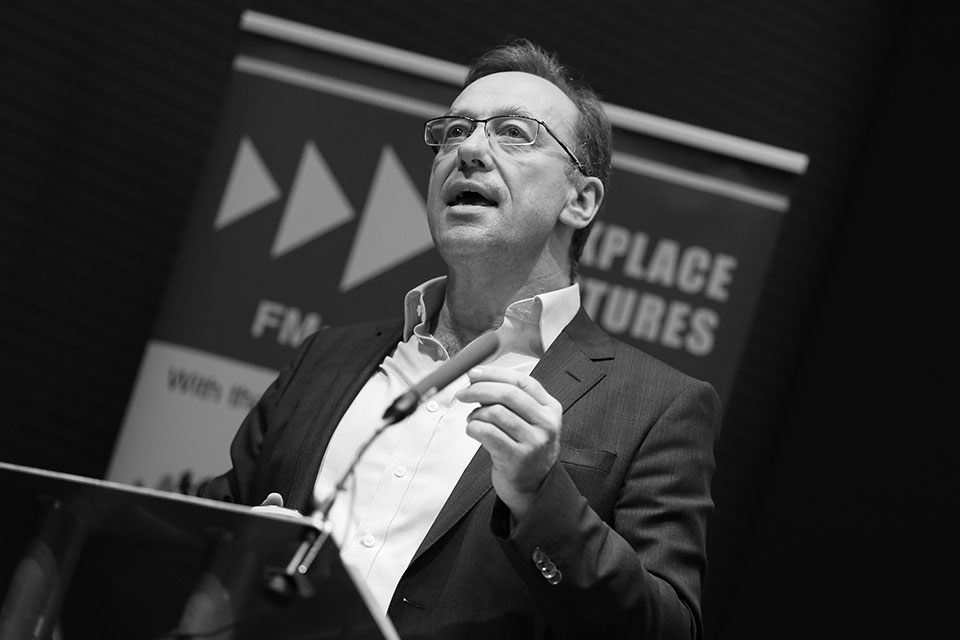Why values driven organizations improve your bottom line

Ken Blanchard and Phil Hodges¹ estimate that fewer than 10% of organizations have clear, written values and many take the work on values no further than words. To create an impact, core values need to extend into the day-to-day fabric of the organization and be a reference for decisions and behaviours at all levels, influencing people daily.
Those in different places in an organization see evidence of culture and values differently. For example; those at the top, rate tangible KPIs (key performance indictors) as demonstrative of organizational culture (e.g. financial performance, competitive compensation); those lower down rate their personal experience as important evidence of ‘values’ (e.g. open communication, employee recognition, access to leaders). Both are forms of evidence.
What does the emerging importance of values (the paradigm we referred to by some as the Values Economy) mean for organizations?
Looking from the best case to the worst-case scenario, you can see for yourself the way you can harness core values for good or ignore core values at your peril. The research from Forrester reinforces what we have known for some time. The key factor common to companies that have delivered sustained high performance – at the top of their market for 100 years or more – is a base of values that is strong enough to provide the employees of the company with a common bond – a purpose beyond profit². A growing body of research shows that there is a strong link between financial performance and values-driven organizations. In 2001, Eric Flamholtz discovered a strong positive correlation between cultural agreement (a proxy for values or cultural alignment) and a company’s EBIT (earnings before interest and taxes).
He concludes: “Organizational culture does have an impact on financial performance. It provides additional evidence of the significant role of corporate culture not only in overall organizational effectiveness, but also in the so-called ‘bottom line.’” ³
Other studies show that companies with strong adaptive cultures based on shared values outperform other companies by significant margins in the areas of sales, profit, employment and stock price growth, over the long term.⁴ The chair of the UK-government-sponsored Employee Engagement Task Force and non-executive director of the Ministry of Justice in the UK, David MacLeod, describing the power of living values, comments:
“All organizations have some values on the wall. What we found was that when those values were different from what colleagues and bosses do, that brings distrust. When they align, then it creates trust.”⁵
Values in practice
How do you make sure that your stakeholders’ experience of your organizational values is explicit and aligned from the boardroom to the front line?
The tone is set by every employee, not just those at the highest level. Those at the top model what is important and are particularly visible in everything that they do – people take notice of how they behave. Yet, wherever you are, you have influence on those around you.
We need to turn the lens inwardly if the organization is going to behave in line with their core values. What are you doing? If you don’t behave as if the core values matter, then others won’t either. For values to be really cemented in the organization’s culture, everyone must be held accountable for living and demonstrating the values in their day-to-day decisions and actions. Embedding values is a challenge.⁶
For organizations, identifying values is the first step but it is not enough. Well-written values without good execution can lead to disasters such as Enron⁷ or, more recently, Carillion. Carillion’s explicit value statements of ‘We Care, We Achieve Together, We Deliver, We Improve’ masked the real and self-defeating culture at work. Many leadership surveys see corporate values as rhetoric rather than reality⁸, with most employees unaware of their organization’s values. And yet, most employees see the potential benefits of having a set of values in the first place, especially if consequences of living and failing to live the core values are explicitly aligned.
“In the wake of the banking crisis and other corporate scandals, now more than ever, organizational values should be at the forefront of business leaders’ minds” Peter Cheese
The lived values of an organization have a huge impact on reputation and business outcomes. It’s also possible to delude yourself and your organization that you’re fine, all is well. The way powerful and intelligent people deliberately set aside crucial facts and turn a blind eye to fatal errors and frauds is explored in the book Wilful Blindness by Margaret Heffernan⁹. But where actions cut across the beliefs and traditions expected by core communities of stakeholders, standards expected in the profession and the ethical standards and practice embedded in different legal systems, disaster can be a very real outcome for all involved.
The bottom line
It might appear obvious, but authenticity is the key. It has become fashionable for organizations to describe themselves as values-driven and yet, for the stakeholders (employees, customers, service partners, local communities, investors, members, citizens) of some, if not many, of these organizations, there is a disconnect between the aspirational words and the experienced reality. Values are now mainstream; it is no longer about a framed plaque on the wall. Values are the guiding compass and are most effective when they consciously inform every decision taken and how employees behave. In the Values Economy, the successful organizations will be those which create a sense of shared values with all stakeholder groups.
However, be aware that, while this approach sounds simple, and in many ways is just that, sustained success requires sustained effort – and it is hard work. Leaders need to lead, not just with public endorsement butin practical terms on an ongoing basis. Strategic alignment with co-ordinated execution is key. Finally, to use a variation on the popular adage, practice makes more perfect: (effective) practice results in improvement and, at the same time, there is always room for further improvement.
“In theory there is no difference between practice and theory. In practice, there is.” Yogi Berra¹⁰
References:
1. Ken Blanchard and Phil Hodges (2003). The Servant Leader.Tennessee: Thomas Nelson Inc.
2. James C. Collins and Jerry I. Porras, Built to Last: Successful Habits of Visionary Companies (New York: Harper Collins 1994).
3. Eric Flamholtz, “Corporate Culture and the Bottom Line,” European Management Journal 19 (2001): 268-275
4. See John P. Kotter and James L. Heskett, Corporate Culture and Performance (New York: Free Press, 1992);
James C. Collins and Jerry I. Porras, Built to Last: Successful Habits of Visionary Companies (New York:
HarperCollins, 1994); and Rajendra S. Sisodia, David B. Wolfe and Jagdish N. Seth, Firms of Endearment: The
Pursuit of Purpose and Profit (Upper Saddle River: Wharton School Press, 2007).
5. Quoted in Laura Chamberlain, “Four Key Enablers to Employee Engagement” (Personnel Today), last modified 27 January 2012
6. CIPD (2012). Employee Outlook. CIPD http://www.cipd.co.uk/binaries/6030%20EmpOutlook%20Autumn%202012%20WEB.pdf (accessed July 28th 2013).
7. Enron scandal at-a-glance, reported by the BBC, 22nd August, 2002. http://news.bbc.co.uk/1/hi/business/1780075.stm (accessed 1st August 2013)
8. Ken Blanchard, Michael O’Connor, Michael J O’Connor Ph.D., Jim Ballard (1997) Managing by Values. San Francisco: Berrett-Koehler Publishers.
9. Margaret Heffernan (2011). Wilful Blindness: Why we ignore the obvious at our peril. London: Simon & Schuster
10. Lawrence Peter “Yogi” Berra (May 12, 1925 – September 22, 2015) was an American professional baseball catcher, who later took on the roles of manager and coach.
Written by Alan Williams.
Add CEOWORLD magazine to your Google News feed.
Follow CEOWORLD magazine headlines on: Google News, LinkedIn, Twitter, and Facebook.
Copyright 2024 The CEOWORLD magazine. All rights reserved. This material (and any extract from it) must not be copied, redistributed or placed on any website, without CEOWORLD magazine' prior written consent. For media queries, please contact: info@ceoworld.biz








